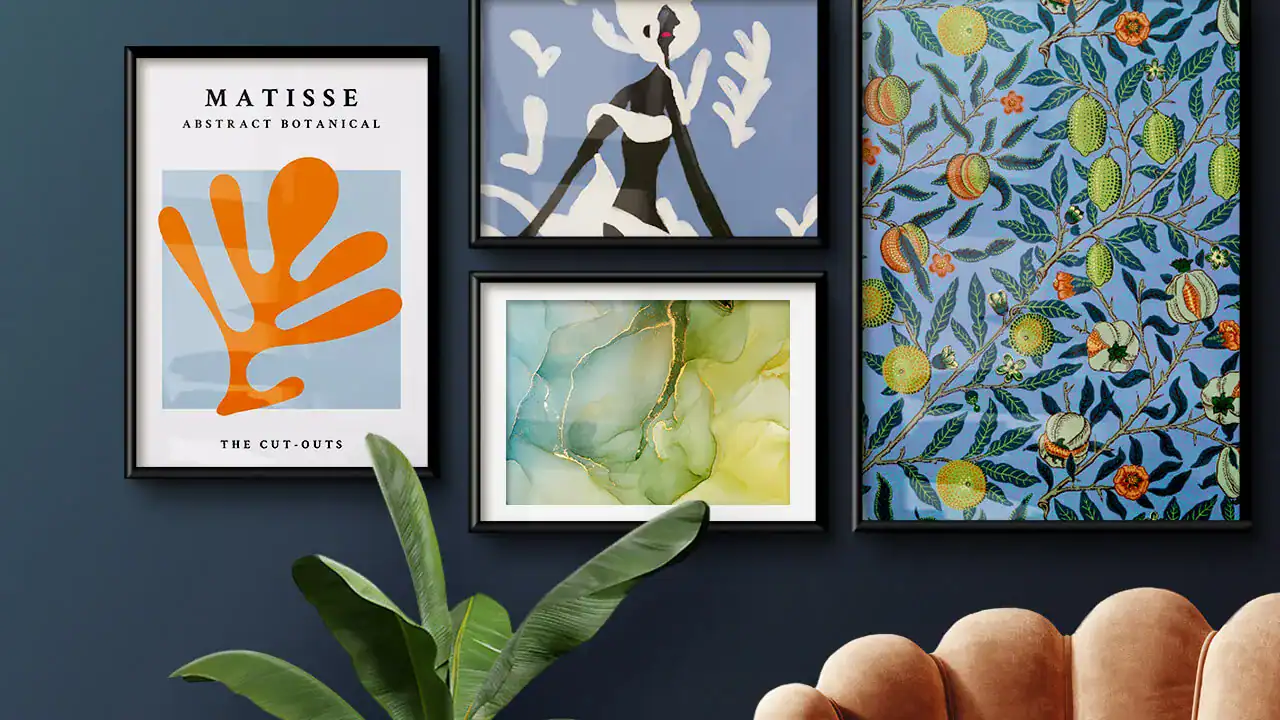If you’re an indie artist looking to make your mark in the world of online selling, you’ve landed in the perfect spot!. An online gallery really opens up the possibilities, so let’s dive in and explore how you can make the most of it!
To start, crafting a stunning digital portfolio is a must.
This is your chance to attract potential buyers who appreciate your unique style.
Make sure to feature high-quality images of your artwork and pair them with engaging descriptions. A well-designed portfolio showcases not just your skills but also your unique voice as an independent creator in the vibrant art marketplace and online gallery of creative entrepreneurship and ecommerce.
Choosing The Right Art Marketplace
Finding a space to showcase your artistic work can be an exciting adventure. Start by identifying who you want to connect with; this will help you choose a platform that suits your style and vision.
Different venues pull in various types of buyers, whether you’re displaying art prints or original pieces.
It’s all about aligning your work with the right crowd.
Next, take a closer look at fees and features offered.
Dive into the details like commission rates and any monthly charges you might encounter. Platforms such as Etsy are popular for their user-friendly interfaces, but it’s smart to evaluate what fits your financial plan.
A solid social media strategy can elevate your presence within these spaces and help you reach a wider audience. By effectively utilizing a social media strategy, artists can promote their art prints and original pieces on platforms like Etsy, while also taking advantage of print-on-demand services to expand their reach in the visual arts market.
How To Build Your Online Gallery?
Jumping into the world of online galleries opens up a canvas of possibilities for you as an artist. Begin with selecting a platform that aligns with your unique vibe and showcases your creations in a stunning light.
A user-friendly and visually striking option is key to keeping your audience engaged.
As you arrange your works, consider a layout that narrates a story, capturing the imagination of your target market.
Don’t skimp on high-quality images; they’re essential in making your art stand out! Also, take the time to write captivating descriptions that resonate emotionally with your audience. This effort not only boosts customer interaction but can also lead to increased art sales, empowering you to thrive in the digital art space.
With a strong focus on branding, understanding the target market, enhancing customer interaction, optimizing art sales, refining website design, and implementing effective SEO techniques, success in the digital art space can be achieved.
Online Galleries
- Online galleries can reach a global audience, increasing visibility for artists.
- High-quality images can boost engagement by up to 94% according to studies.
- Effective storytelling through layout can enhance user experience and retention.
- Engaging descriptions can significantly improve conversion rates and customer loyalty.
Creating A Digital Portfolio Effectively
Imagine your favorite gallery, where every piece tells a story and captures attention. When you’re ready to showcase your best work online, it helps to start by featuring standout pieces that really represent your skills and style.
Show off your versatility with a mix of different digital creations, allowing viewers to see the range of your talent.
Next, consider making the experience user-friendly; a clean layout can keep visitors engaged and focused on what you’ve created.
Easy navigation is key for those who want to explore your art without hassle, so they can quickly find their favorites. Don’t forget to sprinkle in some personal touch; sharing the stories behind your pieces can create a deeper connection with viewers and make your work unforgettable. And be sure to think about using art promotions or even online auctions to attract potential buyers through effective email outreach and showcasing your digital creations, merchandise sales, and commissions.
Engaging Your Target Market Online
Connecting with your audience goes beyond just knowing their age or location; it’s about diving into their passions and preferences. Think about your niche audience—what captivates their interest? Are they on the lookout for unique pieces or do they lean towards vibrant prints? Tailoring your content creation around these insights can really make a difference.
Effective engagement isn’t merely posting your art; it’s about embodying your artistic identity.
Share your journey through platforms like art blogs, showcasing not just your work but the story behind it.
This approach fosters trust and paves the way for potential influencer collaborations. Genuine interactions with your followers show them they matter, and when they feel valued, they’re more inclined to engage in influencer collaborations, appreciate your art blogs, and support your content creation, thereby reinforcing your artistic identity and helping you refine your pricing models for your niche audience.
Audience Engagement
- Understanding your audience’s interests can increase engagement by up to 70%.
- Sharing personal stories and journeys can enhance trust and connection, leading to a 50% increase in follower loyalty.
- Collaborations with influencers can expand your reach by 30% and attract new followers.
- Tailoring content to audience preferences can lead to a 40% increase in content shares and interactions.
What Are Pricing Models For Art Sales?
Setting a fair value for your artwork can make all the difference in how it is perceived and sold. For indie artists venturing into the online art scene, exploring different strategies to price your creations can open up new revenue opportunities.
Consider value-based pricing, which revolves around what customers feel your work is worth.
Then, there’s cost-plus pricing: simply calculate your expenses and add a profit margin.
It’s all about finding that sweet spot where your art resonates with buyers. Engaging with your audience can guide this journey; knowing who they are and what they’d invest helps shape your decisions.
Don’t shy away from experimenting with different approaches and collecting feedback—it’s all part of building a community around your art
Utilizing Ecommerce For Independent Creators
If you’re an independent creator, tapping into the world of online selling can be a game-changer. Not only does it broaden your reach, but it also creates a direct line to collectors who truly appreciate your unique creations.
Crafting an engaging online presence allows you to showcase your art while smoothly managing shipping logistics.
It’s more than just setting up a shop; it’s about curating an enjoyable experience for your buyers.
Good customer support can turn a one-time visitor into a loyal fan. So, let’s jump into how to select the right platforms and design a storefront that genuinely reflects your artistic vision
Promoting Your Art Through Social Media Strategy
Connecting with your audience can really elevate the visibility of your artwork. It’s more than just sharing visuals; it’s about fostering a community that appreciates your creativity.
Start by defining your brand voice.
What makes your art unique? Share those qualities openly, and don’t be shy about showing your personality.
Next, engage with your audience. Ask them what they love about your pieces or share behind-the-scenes moments from your creative process.
This connection can transform casual viewers into loyal fans. Choose the right platforms that align with your audience—think Instagram and Pinterest for visual appeal.
If you’re using digital marketing, remember to leverage hashtags wisely; they can increase your visibility.
Using relevant tags helps you reach potential buyers without overwhelming them. Keep an eye on engagement metrics to see what promotional content resonates best with your audience in relation to return policies, digital marketing, market analysis, subscription models, and art fairs.
Conclusion
Shipping your artwork isn’t just about moving it from point A to point B; it’s about making sure buyers feel confident in their decision to purchase. With a grasp on shipping logistics, you can turn what might feel like a hurdle into a smooth experience.
Proper packaging plays a big role; it safeguards your art while also showcasing your professionalism.
Partnering with the right shipping service is equally important, as they should understand the nuances involved in handling creative pieces and align with your monetization approaches.
Being open about shipping costs is a game changer.
It helps customers feel more secure in their choices. These little touches enhance the buyer experience and promote social validation for your work. As you continue promoting your art through video marketing strategies, remember that every detail counts, from the power of social validation and user-generated content to the importance of gallery representation, art tutorials, and effective monetization approaches.
Shipping Artwork
- Proper packaging can reduce the risk of damage during transit, ensuring the artwork arrives in perfect condition.
- Transparent shipping costs can increase customer trust and reduce cart abandonment rates.
- Using a specialized shipping service can enhance the perceived value of the artwork and improve customer satisfaction.
- Effective communication about shipping and handling can lead to positive reviews and repeat customers.
Originally posted 2025-08-19 16:46:42.







